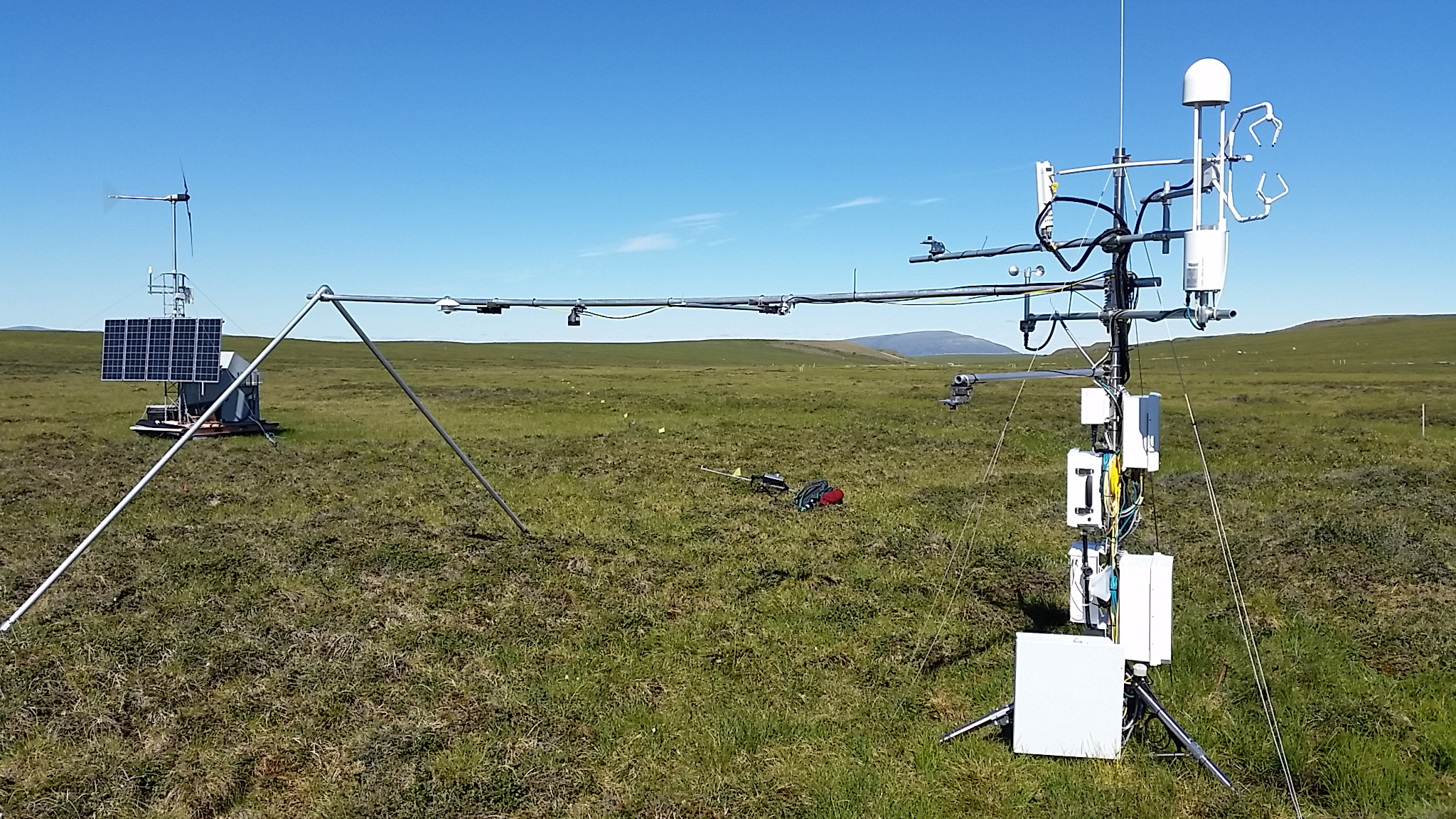Warmer falls push Arctic tundra into a carbon source for past 15 years
Haley Dunleavy
907-474-6407
Dec. 13, 2023
This week, scientists from the University of Alaska Fairbanks are presenting their work alongside thousands of colleagues from around the world at the 2023 American Geophysical Union fall meeting. Some of their discoveries are featured here. You can also find out more about UAF at AGU by searching for #UAFxAGU on social media platforms.

An eddy covariance tower measures carbon dioxide being released from a tundra ecosystem at Imnavait Creek near Toolik Field Station on Alaska’s North Slope in July 2016.
Alaska’s Arctic tundra has long been considered a carbon dioxide sink, trapping large amounts of carbon-rich matter in its deep, frozen soils. As a result, some in the state are looking to this ecosystem as a way to mitigate climate change. But new long-term research is finding that may not always be the case.
Eugénie Euskirchen, a professor at the University of Alaska Fairbanks Institute of Arctic Biology and Department of Biology and Wildlife, has been measuring the amount of carbon coming in and out of the tundra for the past 15 years. It’s one of the longest continuous, year-round carbon flux records in this region.
Surprisingly, her sites, located near UAF’s Toolik Field Station, have consistently been a carbon source, releasing more of the greenhouse gas than they’ve been taking up through photosynthesis.
The culprit of this unexpected source, Euskirchen said, is likely the Arctic’s warmer, longer falls, driven by climate change, which delays when soils refreeze and their carbon-releasing microbes become dormant.
“There were three really extreme years between 2014 and 2016, and again in 2022, where we saw a really late refreeze, and that is when the soils really seemed to lose a lot of CO2,” she said.
Euskirchen compared her measurements to ecosystem models that predict tundra carbon dynamics based on climate. Concerningly, she found the models didn’t capture the carbon dioxide release associated with these extreme warming events. Instead, they predicted a net carbon sink, resulting in a long-term mismatch between model outputs and what’s happening on the ground.
“If we’re saying that we have these large natural ecosystems that take up a lot of carbon, then we need to be able to show and model that,” Euskirchen said, emphasizing the importance for climate mitigation land management plan. “This would not be giving us any carbon credits here.”


